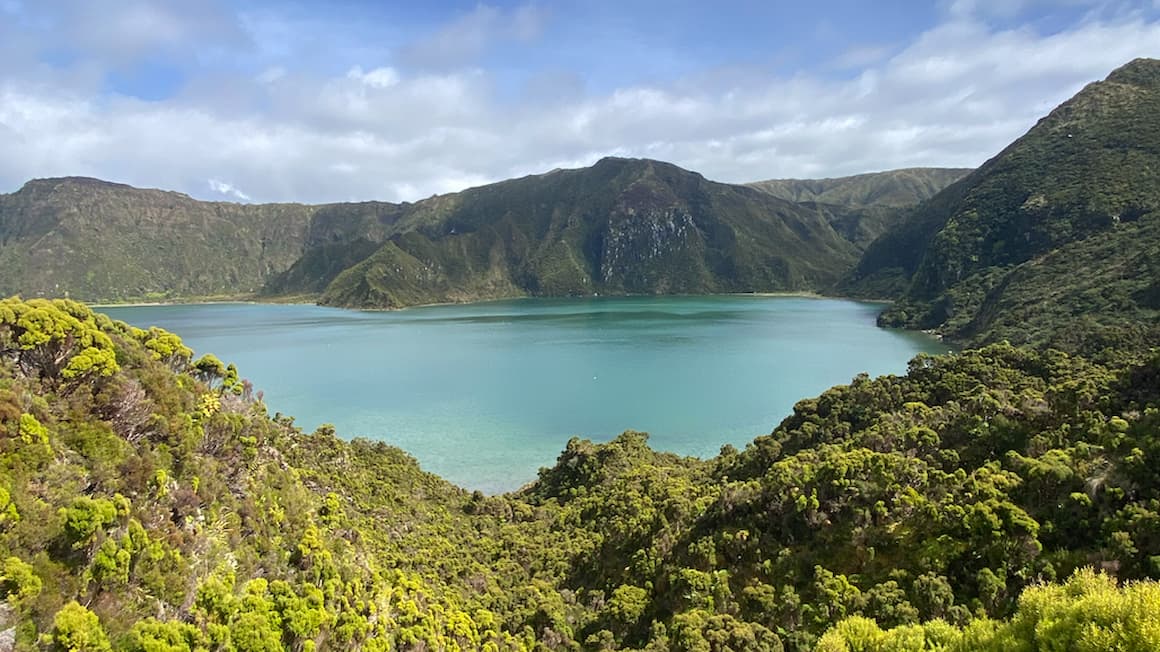The Broke Backpacker is supported by you. Clicking through our links may earn us a small affiliate commission, and that's what allows us to keep producing free content 🙂 Learn more.
Portugal is a walker’s paradise. Although situated beside Spain, it offers a somewhat milder climate in part due to being on the west coast, where the sea breeze creates cooler temperatures and stunning coastal formations.
Beyond the hilly scenery is a country packed full of rich maritime history, charming villages and world-class food, which remains affordable. Whatever kind of hiker you are, Portugal will have a trail for you. And, the bonus is that whichever trail you decide on, there’s a high likelihood that it’s exceedingly easy to reach via public transport.

The Broke Backpacker is supported by you. Clicking through our links may earn us a small affiliate commission, and that's what allows us to keep producing free content 🙂 Learn more.
Diverse Landscapes and Terrain
Portugal’s compact size is actually an advantage. You’re only ever a short train ride away from a new trail. With plenty of diversity, it’s possible to see coastal paths, mountain trails, and rural countryside all in a single trail. And, let’s not forget the islands, such as Madeira, which boasts one of the most stunning trails in Europe, and the Azores, which has some of the highest biodiversity in Europe.
Each region has its own distinct character, too, which is why you can see a lot in a short amount of time. The Camino de Santiago trail from Lisbon, for example, begins in the stunning city on the coast, and ventures through the River Tagus, a national park, vineyards, Santa Iria de Azoia, and various other villages all in a single trip.
Central Portugal offers the Serra da Lousã, known for its schist villages and clear-water rivers, while coastal dunes and mountains can be found across the whole length of the country.
Favourable Climate for Year-Round Walking
Portugal’s climate is ideal for walking holidays throughout the year. The country enjoys over 300 days of sunshine a year, with mild temperatures in winter. The best seasons for hiking are spring (March to May) and autumn (September to November), when temperatures are comfortable and landscapes are at their most colourful. Summer can be hot, especially inland, but coastal areas benefit from cooling sea breezes. So, if you’re looking to undergo a Camino de Santiago route during summer, Portugal may be cooler.
Well-Established Walking Routes

Because of this diversity and close proximity, there are an extensive network of well-maintained walking routes.
- Rota Vicentina: A 450km network of trails along the southwest coast, including the famous Fishermen’s Trail.
- Portuguese Camino de Santiago: A historic pilgrimage route from Porto to Santiago de Compostela in Spain. There are coastal routes too.
- Via Algarviana: A 300km trail across the Algarve’s diverse interior landscapes.
- Paiva Walkways: An 8km wooden walkway along the Paiva River, offering stunning views of waterfalls and rapids.
These routes are well-marked and often supported by local communities, so you’re sure to benefit from amenities. Many trails are part of the European long-distance paths network, ensuring high standards of maintenance and signage.
The Portuguese government has invested in developing and promoting walking routes, recognising their importance for sustainable tourism – particularly as it’s preferred to the long-term nomad’ing in the inner cities.
Digital infrastructure has also improved, with many trails now featured on apps and websites, offering GPS tracks and real-time updates. Download your maps offline ahead of time. Some areas like the Azores have implemented impressive innovative systems, such as trail traffic lights to manage capacity and ensure sustainability. This can also be handy depending on if you’re looking for a solo adventure or to make friends.
Gastronomic Delights Along the Way
Portuguese cuisine can go under the radar, but it’s one of the very best. During your walking holiday, you will always be looking forward to your next pit stop as you build an appetite. Again, don’t let the size deceive you, Portugal is diverse with its cuisine too, meaning different regions have their own thing going on.
In coastal areas, you’ll be sure to find fresh seafood, such as grilled sardines and bacalhau (salt cod). However, inland regions like Alentejo and Douro are where the vineyards are, meaning you can get a short wine tasting tour in the evening (or a short one during lunch). And, mountainous areas are generally known for their heavy stews and smoked meats, so these are perfect for refuelling, particularly warming up if you’ve gone during winter.
Local markets and cafes permeate almost everywhere. These are the best places to try out regional specialities. Many walking routes incorporate food and wine experiences, and if your doesn’t, just keep an eye out and plan ahead. Nobody wants to walk long distances on a calorie deficit.
Practical Considerations
When planning a walking holiday in Portugal, it’s worth bearing in mind a few things.
- Transportation: Many trailheads are accessible by public transport, but some remote areas may require car hire. There may be buses that connect some small towns, but they will not run frequently.
- Essential gear: Good walking boots, sun protection, and waterproofs are crucial. A windproof jacket may also be wise if you’re on a coastal walk during off-season.
- Safety tips: Carry sufficient water and electrolytes, especially in summer, and be aware of tide times on coastal walks.
It’s advisable to book accommodation in advance, particularly during peak seasons, though some management companies like SantiagoWays can organise this for you. The companies offering self-guided tours come with pre-arranged lodging as well as luggage transfers, meaning you can travel lighter. This is seriously worth considering if you’re not used to trekking with a heavy bag.
Travel insurance covering outdoor activities is recommended as usual, as well as learning a few basic Portuguese phrases so you can interact with locals (they appreciate the effort). Always check current trail conditions and weather forecasts before setting out.
Conclusion
Portugal is jam-packed full of ancient villages, medieval towns, and Roman roads. You’ll see Moorish castles and Baroque churches, as well as many great eateries and vineyards. It’s perfect for history buffs yet perfect for nature lovers. It’s also ideal for those with less hiking experience because not only are the routes nicely laid out, but the weather is forgiving if you avoid mid-summer. All in all, Portugal offers variety in every sense for a walking holiday.








